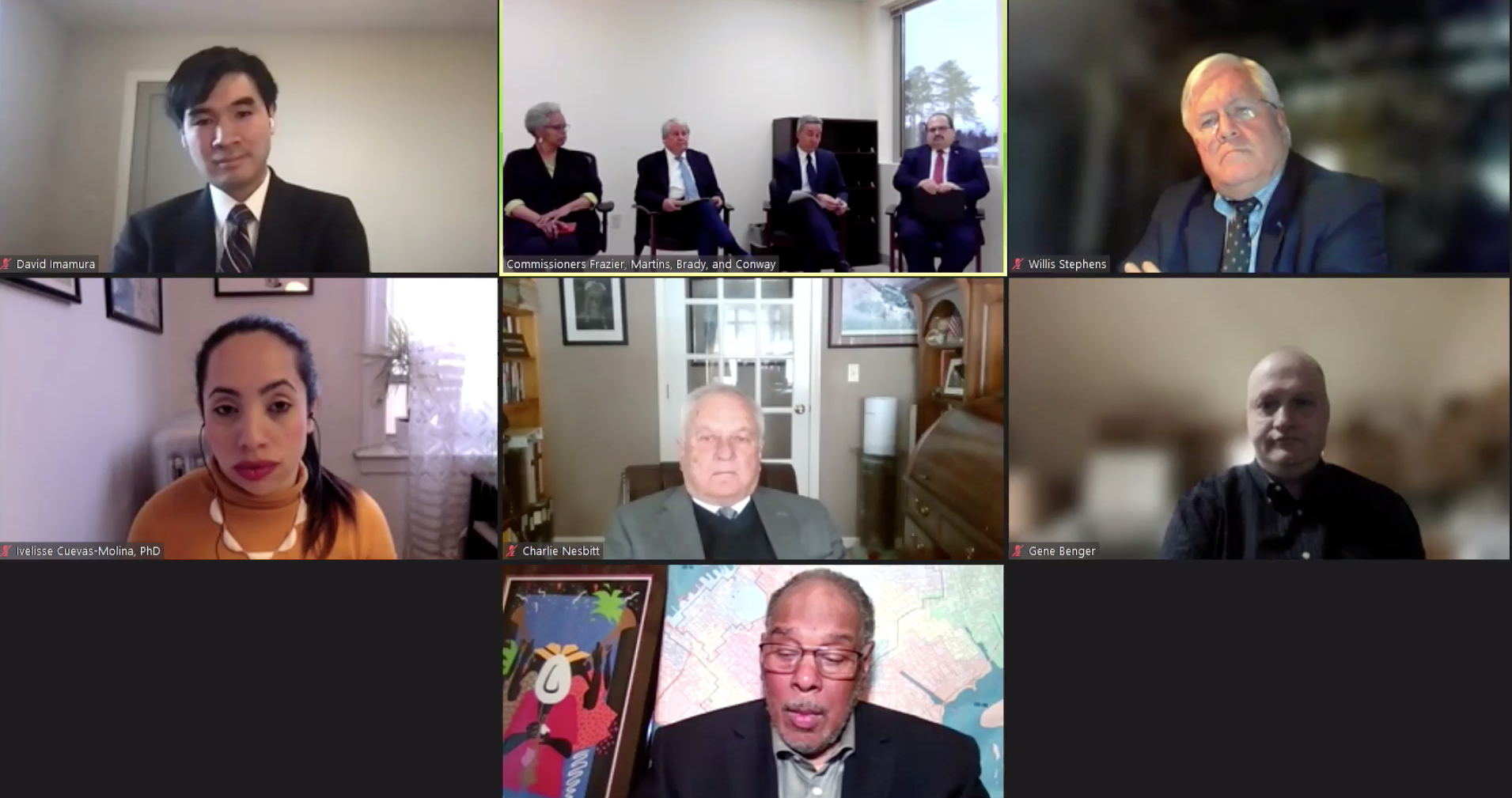Redistricting commission splits on maps, again
/New York’s Independent Redistricting Commission met Monday to vote on which map would be sent to the State Legislature for approval and decided to send two. Screenshot via livestream
By Rachel Vick
The New York Independent Redistricting Commission failed to reach a consensus on a set of redrawn Congressional, Assembly and State Senate maps Monday.
In a final, tense meeting to vote on which map would be sent to the state legislature for approval, the10-person commission — intended to serve as a bipartisan voice in the creation of new legislative districts — decided to send both to the lawmakers.
The vote was split evenly, with the five Republican members voting in favor of the map they had created and the five Democratic members voting for their proposal. What they could agree on, however, was the disappointing nature of the outcome and the need to support systematically disenfranchised communities.
“I am extremely proud of the efforts of this commission,” said Commission Chair David Imamura. “If there’s one thing I have learned from this process it is how many parts of this state have been systematically stripped of the ability to have representatives of their choice in Albany and Washington.”
Over the 16 separate meetings held throughout the process, the commission discussed ways to address concerns voiced by communities across the state.
Imamura criticized the lack of cooperation between the representatives from opposing parties, claiming the Republican contingency “consistently” declined to discuss the proposals Democratic members of the commission put forth.
He alleged that while the Democrats exerted effort to compromise, “the Republicans did not.”
“I did not join this commission to ignore the cries for representation by communities who have been robbed of their voices,” Imamura added. “I did not join this commission to allow my Republican colleagues to hold hostage the hopes of New York’s most disadvantaged voters in an effort to regain GOP majority.”
Vice Chair Jack Martins disputed the claims and said that the Democrats were not openly participating, and had created a map separate from the other members. He also said the new map they suggested did not differ enough from the initial proposal — when each party put forward their own suggestion.
“You chose to walk away from the table - that’s on you,” Martins said. “We can cast dispersion and question why either side did what they did [but] there's a record - foil it, subpoena whatever you want to do. Those maps reflect the entire commission’s… priority.”
“We took your priorities and ours and... to say Republicans somehow failed to do their part is simply untrue,” he added.
The commission was created through a constitutional amendment to serve as a nonpartisan body less influenced by the political ambitions of lawmakers who were previously responsible for creating electoral districts.
If the Assembly votes to reject the commission’s maps twice, the state legislature will be tasked with creating their own final maps.
Local leaders who worked to rouse participation from their communities throughout the public comment period also expressed disappointment in the commission’s inability to reach a consensus.
The APA VOICE Redistricting Task Force rallied virtually in the hours after the vote to focus on what they said matters most; implementing a map that will best serve representation for their communities. Though they say the outcome was far from shocking, they celebrated the inclusion of some of the proposals they had previously recommended.
“We are disappointed but we are not surprised by the IRC being deadlined,'' said Task Force Chair Elizabeth OuYang. “This is what happens when a 10 person so-called independent commission is created that is split evenly along party lines. There were no independently chosen commissioners… yet we, the public, were forced to participate in this charade.”
The coalition has been fighting for greater representation for Asian Americans throughout New York City. In Queens the Asian population grew faster than any other population in the borough over the past decade, according to recent Census data.
They say the Unity Map, listed as the “letters” version, would best bring together groups that have been historically broken into separate voting blocks.
Representatives from Queens community based organizations including South Queens Women’s March and CHHAYA were on hand to offer their perspective on the value of the map in question. If chosen, it would unify currently-fractured Richmond Hill under one Assembly District. The Asian American-Pacific Islander communities in Jackson Heights and Elmhurst would also be concentrated into one district.
Mohamed Amin, founder of the Caribbean Equality Project, said that “equity and justice for Richmond Hill, South Ozone Park and Ozone Park are long overdue.”
“The unity map keeps our neighborhoods and communities of interest…intact with established common interests that are grounded in historical, racial, cultural, economic, ethnic and religious ties,” Amin said. “It's time to end this cycle of gerrymandering and give us a fighting chance to emerge from the COVID-19 pandemic a more politically resilient community.”




